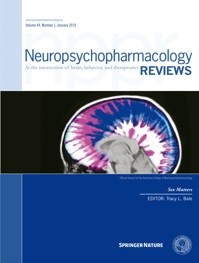 “Glioma-related epilepsy significantly impact on patients’ quality of life, and can often be difficult to treat. Seizures cause significant morbidity for example neurocognitive deterioration, which may result from seizures themselves or due to adverse effects from antiepileptic drugs. Management of tumour with surgery, radiotherapy and chemotherapy may contribute to seizure control, but tumour related epilepsy is often refractory despite adequate treatment with standard anti-epileptic medications. Given the increasing interest in medicinal cannabis (or cannabidiol or CBD) as an anti-epileptic drug, CBD may help with seizure control in glioma patients with treatment-refractory seizures. Here we present a case of a young lady with recurrent glioma who had refractory seizures despite multiple anti-epileptic agents, who had significant benefit with CBD.”
“Glioma-related epilepsy significantly impact on patients’ quality of life, and can often be difficult to treat. Seizures cause significant morbidity for example neurocognitive deterioration, which may result from seizures themselves or due to adverse effects from antiepileptic drugs. Management of tumour with surgery, radiotherapy and chemotherapy may contribute to seizure control, but tumour related epilepsy is often refractory despite adequate treatment with standard anti-epileptic medications. Given the increasing interest in medicinal cannabis (or cannabidiol or CBD) as an anti-epileptic drug, CBD may help with seizure control in glioma patients with treatment-refractory seizures. Here we present a case of a young lady with recurrent glioma who had refractory seizures despite multiple anti-epileptic agents, who had significant benefit with CBD.”
https://www.ncbi.nlm.nih.gov/pubmed/31848037
“CBD could potentially be a management option in treatment-refractory epilepsy in glioma patients.”
https://www.jocn-journal.com/article/S0967-5868(19)31306-2/fulltext

 “This review focuses on the possible roles of phytocannabinoids, synthetic cannabinoids, endocannabinoids, and “transient receptor potential cation channel, subfamily V, member 1” (TRPV1) channel blockers in epilepsy treatment.
“This review focuses on the possible roles of phytocannabinoids, synthetic cannabinoids, endocannabinoids, and “transient receptor potential cation channel, subfamily V, member 1” (TRPV1) channel blockers in epilepsy treatment. “In 2016, the global number of individuals living with dementia was 43.8 million, representing a 117% increase from 1990-mainly due to increases in aging and population growth.
“In 2016, the global number of individuals living with dementia was 43.8 million, representing a 117% increase from 1990-mainly due to increases in aging and population growth. “In drug development, the creation of highly selective ligands has been unsuccessful for the treatment of central nervous system disorders.
“In drug development, the creation of highly selective ligands has been unsuccessful for the treatment of central nervous system disorders. “Irritable bowel syndrome (IBS) is one of the most common functional gastrointestinal (GI) disorders characterized by pain and impaired bowel movements. Currently available drugs show limited efficacy.
“Irritable bowel syndrome (IBS) is one of the most common functional gastrointestinal (GI) disorders characterized by pain and impaired bowel movements. Currently available drugs show limited efficacy.
 “Pantothenate kinase-associated neurodegeneration is characterized by severe, progressive dystonia. This study aims to describe the reported usage of cannabis products among children with pantothenate kinase-associated neurodegeneration.
“Pantothenate kinase-associated neurodegeneration is characterized by severe, progressive dystonia. This study aims to describe the reported usage of cannabis products among children with pantothenate kinase-associated neurodegeneration. “Chronic pain affects a significant percentage of the United States population, and available pain medications like opioids have drawbacks that make long-term use untenable.
“Chronic pain affects a significant percentage of the United States population, and available pain medications like opioids have drawbacks that make long-term use untenable. “Epilepsy is a neurological disorder that affects approximately 50 million people worldwide.
“Epilepsy is a neurological disorder that affects approximately 50 million people worldwide.